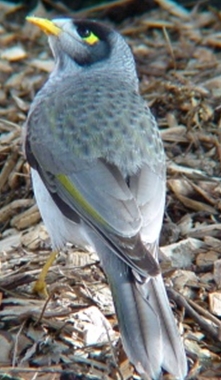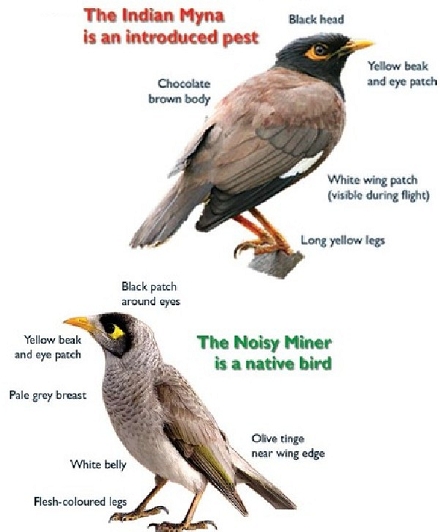- Home
- Biodiversity
- Pest Animals
Pest Animals
Foxes
Foxes have been sighted in the Waverley area, however a control program is not presently in place. If you sight a fox, please report to Council by phoning the customer service centre on Phone; 9369 8000
Domestic pets
Many domestic cats and dogs were observed by the Australian Museum during the 2010 biodiversity Survey. Cats and dogs, domestic and feral pose a serious threat to our native animals. Native wildlife is vulnerable to attack from domestic pets that are allowed to roam free, especially at night. As a responsible pet owner you can reduce the number of native animals killed in your area and maintain the health of your pet by following the following simple guidelines.
- Keep your dog on a leash at all times, the only exception being when using Council’s leash free areas.
- Keep your cat contained on your property during the day and keep indoors at night.
Indian Myna Birds
The Common or Indian Myna Bird was introduced into Melbourne in 1862 to control insect pests in market gardens, and then to the sugar cane fields in north east Queensland in 1883. Indian Mynas have since become a very successful invader of both our natural and urban environments.
What does an Indian Myna bird look like?
The common or Indian Myna is a small bird, approximately 12cm tall, a chocolate brown colourerd body with a black head.
The pest species shows large white wing patches in flight.
(Photoghraph by Andrew Tatnell)
 Similar Species; the Noisy Miner
Similar Species; the Noisy Miner
The Indian Myna bird is often mistaken for the native bird, the Noisy Miner. Both birds have yellow legs, beaks and bare eye skin.
The native species is slightly larger in size, 24-29cm and mostly grey in colour. Noisy Miners are protected and must be released if trapped.
(Photograph R Major Australian Museum)
Habitat
The Common Indian Myna is closely associated with human habitation. In the evening, large groups of Common Mynas gather in communal roosts, mainly in the non-breeding season, in roof voids, bridges, and large trees
Feeding
Common Indian Mynas are accomplished scavengers, feeding on almost anything, including insects, fruits and vegetables, scraps, pets' food and even fledgling sparrows
Why are they considered a pest?
Common Indian Mynas are considered pests in many parts of the world, and are one of 3 bird species that are on the top 100 of the world’s most invasive species. In Australia these birds breed very successfully and hundreds of birds can gather at a single roost.
They compete aggressively with native birds and small mammals for food and nesting sites and can damage fruit trees.
In urban areas they can spread mites and have the potential to spread disease. They reduce the amenity of public areas through excessive noise and bird droppings.

What can you do about the problem?
There are many ways in which residents can help to keep the numbers of Indian Mynas down in our urban environment.
- Watch what food is left out in your garden
- Mynas will eat pet food – remove this food after you pet has finished or feed your pet indoors
- The same applies to water left out for your pet
- Plant native plants in your garden, especially species that are local to the eastern suburbs area – this will attract more native birds to your garden and lessen the impact of Indian Mynas
- Plant a dense native shrub layer and reduce lawn areas
- Do not plant palm and pine trees, replace with native plant species
Related Links:
- Common Indian Myna
- Research Paper: Do Common Mynas significantly compete with native birds in urban environments?
- We love to hate the common Myna
- Humane Control- Development of a model code of practice and standard operating procedures for the humane capture, handling or destruction of feral animals in Australia
- Canberra Indian Myna action group
